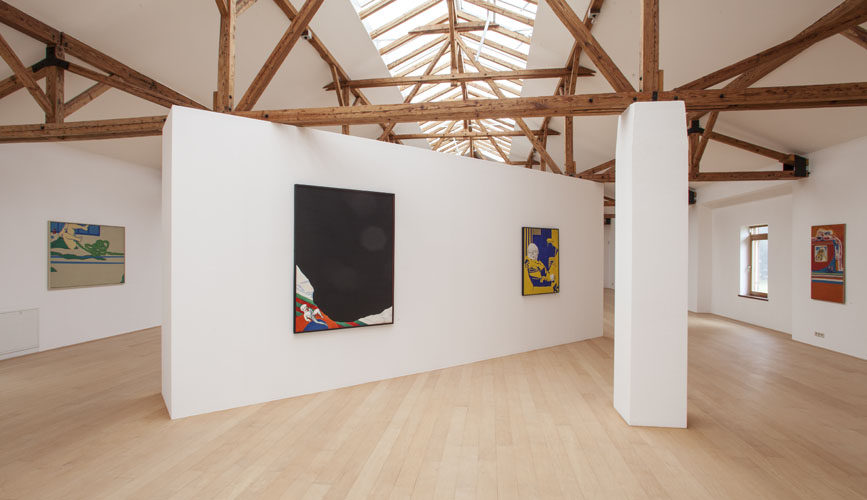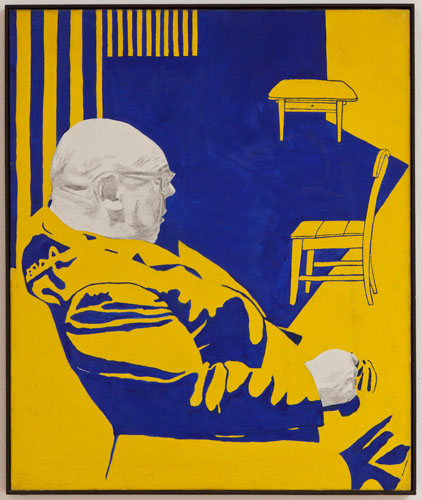Uwe Lausen

Room View
© VG Bild-Kunst, Bonn 2011
Uwe Lausen belongs to a small circle of German painters who, in the 1960s, were able to translate the changes of their time into painting with great artistic potential, a seismographic sense of social upheaval and a keen intellect. The entire oeuvre of Lausen, who died young, was created between 1961 and 1969.

Mann im Sessel, 1965-1966
© VG Bild-Kunst, Bonn 2011
Inspired by the Munich artist Group Spur and active in the circle of leftist Radicals Situationist internationale (S.I.), Louses initially worked on literary-philosophical territory, but soon became by decisive gallery owners and museum people as Exceptional talent in the art still predominantly influenced by abstract expressionism.
A characteristic part of the work of lice from the mid-1960s is a partial reduction of his motifs on black-and-white or colour contrasts, which, like the adaptation of photographic motifs, makes the proximity to the photography of his wife Heide Uta proud in his own pictorial language Translated. In addition, composition elements from the field of comics as well as the politicization of some works inspired by the social climate of his time.
Completely unconnected levels of action, over-sharpening alongside distortions, the isolation of motifs, but above all sudden bursts of violence in his scenarios reflect the delusions and panic attacks of his unstable psyche under the influence of drugs. Lausen's ability to realize these levels of perception vividly also predestined him to become a contemporary stage design artist. However, Lausen was unable to complete his commission for a stage design for Peter Stein's production of Edward Bond's "Early Morning" at the Schauspielhaus Zurich.
